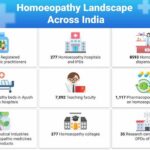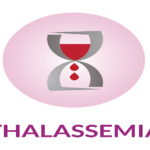The main reasons for change in the earlier definition of blindness under NPCB&VI are as under:
i) The definition of blindness has been changed in consonance with the definition of blindness used by WHO for global comparison.
ii) With the earlier definition of blindness (visual acuity <6/60) used by NPCB in the Ministry of Health and Family Welfare, the prevalence of blindness in India was being shown much higher as compared to other countries in South-East Asian Region and globally as these countries utilize the WHO criteria for estimating prevalence of blindness and the same was leading to erroneous comparison and India was seen in a poor light in eye care at international forums.
iii) Further, besides blindness, the programme still attends to cases of severe impairment of vision and hence the re-designation of national programme as above. Apart from blindness, the programme is geared towards taking care of all categories of visual impairment including severely blind and also low vision cases.
The uniformity in the definition of blindness across various regions of the world is a pre-requisite for facilitating collection of population based data on prevalence of visual impairment in a uniform and comparable manner for estimating the global burden of blindness.
The following steps are being taken under NPCB&VI for reduction in the prevalence of blindness and also to achieve the elimination of avoidable blindness:
• Reduction in the backlog of blind persons by active screening of population above 50 years, organizing eye screening camps and transporting operable cases of cataract and other eye diseases to fixed eye-care facilities for appropriate operation/treatment;
• Performance of cataract operations through Government and Non-Governmental Organization (NGO) Eye Hospitals;
• Screening of children for identification and treatment of refractive errors and distribution of free spectacles to those suffering from refractive errors under School Eye Screening Programme;
• Apart from Cataract, focus on treatment/management of other eye diseases like, glaucoma, diabetic retinopathy, corneal blindness, vitreo-retinal diseases, diseases causing childhood blindness etc. is being actively taken up under NPCB&VI;
• Collection of donated eyes for corneal transplantation and strengthening of eye banking services;
• Strengthening/developing of eye-care infrastructure at various levels to improve quantity and quality of eye-care services;
• Support for setting up of Regional Institutes of Ophthalmology (Centres of Excellence) for tertiary eye care services;
• In-service training of Eye Surgeons and paramedics for refreshing skills and use of modern technology; and
• Promoting preventive Eye care and creating awareness through Information Education and Communication (IEC) activities.
The Minister of State (Health and Family Welfare), Smt Anupriya Patel stated this in a written reply in the RajyaSabha here today.







